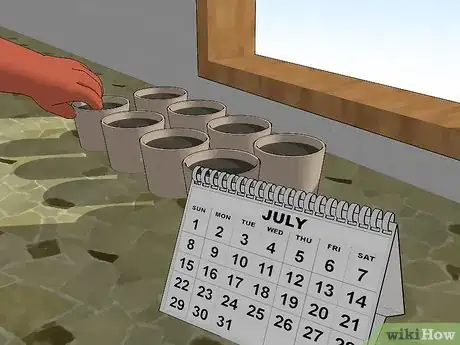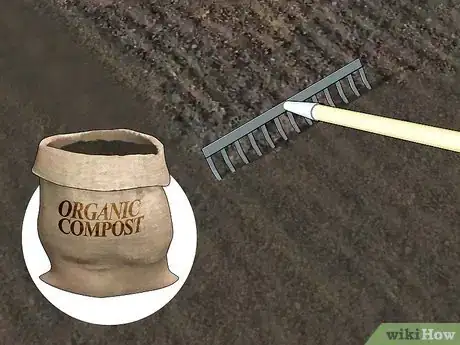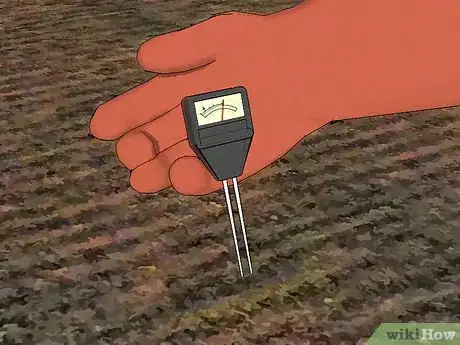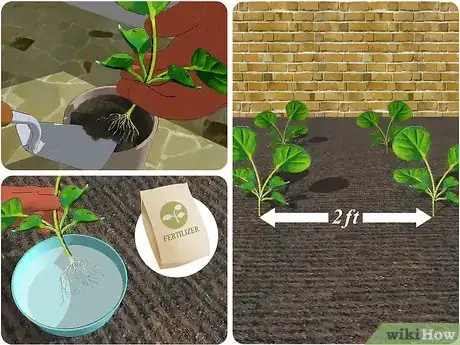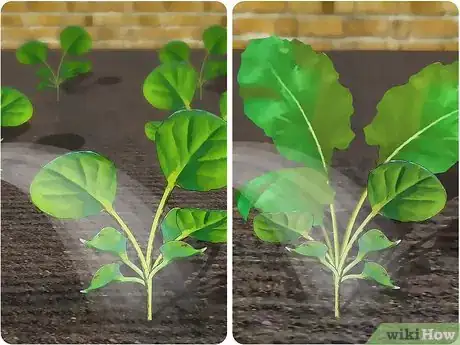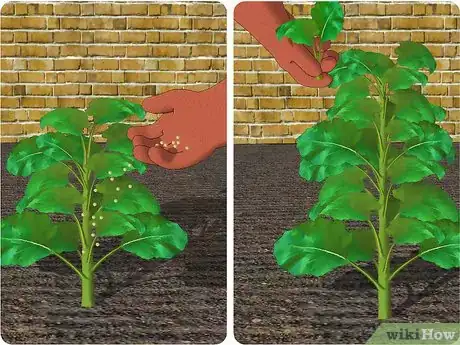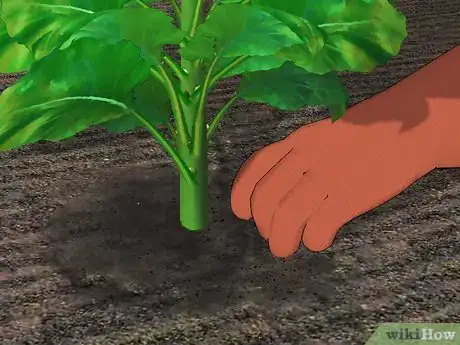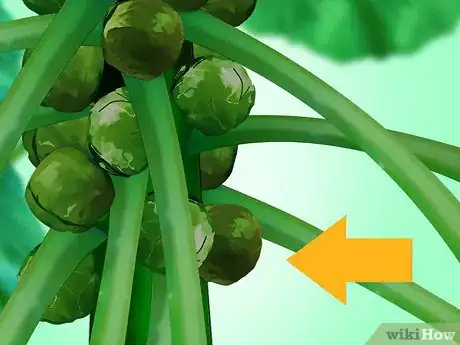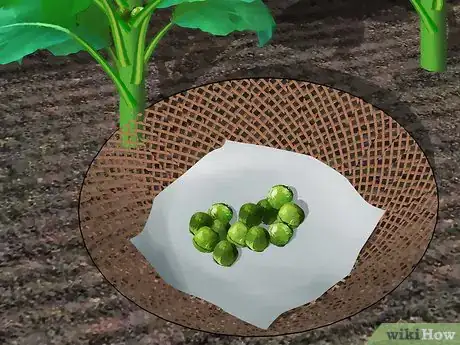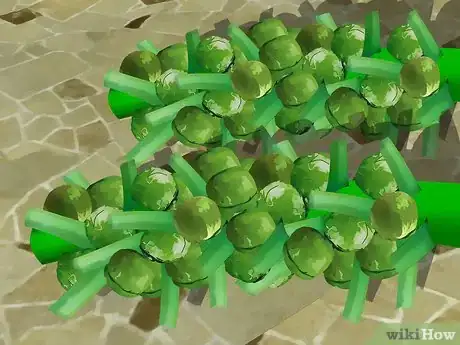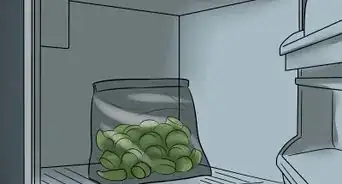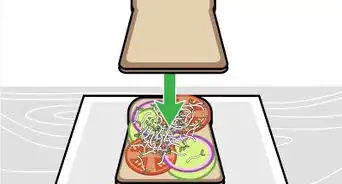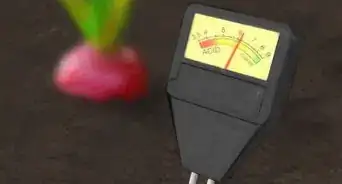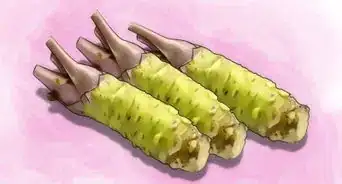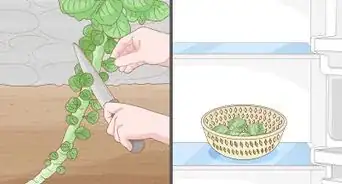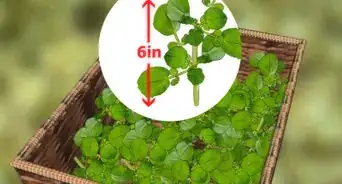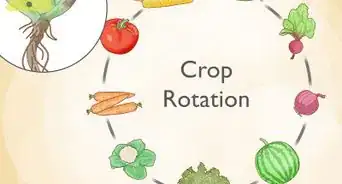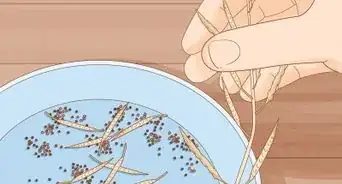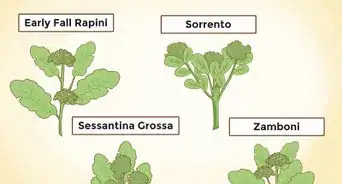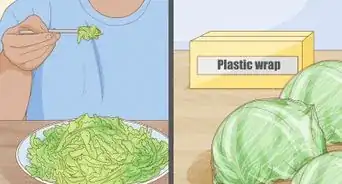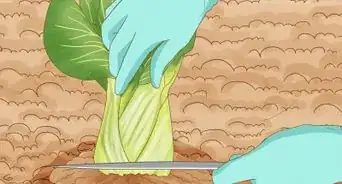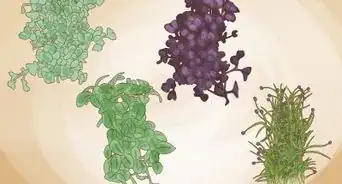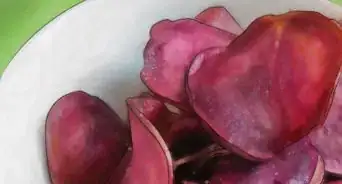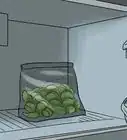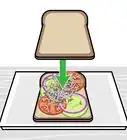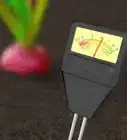wikiHow is a “wiki,” similar to Wikipedia, which means that many of our articles are co-written by multiple authors. To create this article, 12 people, some anonymous, worked to edit and improve it over time.
There are 7 references cited in this article, which can be found at the bottom of the page.
This article has been viewed 113,971 times.
Learn more...
Brussels sprouts are slow growing, cool temperature plants that can withstand frost. Often grown for a late fall harvest, this vegetable takes 80 to 100 days from transplant to harvest and does best in temperatures from 45 to 75 degrees Fahrenheit (7.2 to 23.8°C).
Steps
Sowing
-
1Sow your seeds in seed pots. Do this approximately 5 to 6 weeks before you want to transplant them into your garden. Plant the seeds 1/2 inch (1.25 cm) deep. You can keep seed pots inside near a window or outdoors in a protected area as long as daytime temperatures stay above 50 degrees Fahrenheit (10° C). Germination will occur in 2 to 5 days.[1]
- Brussels sprouts transplants should be started in April for May planting. Brussels Sprouts can be direct seeded up until mid-late June for a continuous harvest.[2]
-
2Prepare the garden 2 to 3 weeks before planting. Till the soil and mix in organic compost.[3] Brussels sprouts do best in loose organic soil that retains moisture. They grow best in full sun but will tolerate partial shade.Advertisement
-
3Check the pH level of your soil. Amend it if necessary, using the appropriate fertilizer. Brussels sprouts like a pH level of 6.0 to 6.5. Soil temperature should be 70-80°F (21-26°C) for optimal growth.
- Brussels Sprout is a heavy feeder and will also benefit from applications of boron, calcium and magnesium, particularly during the early stages of growth.
-
4Transplant your seedlings into the garden. They are ready when they are 4 to 6 weeks old and around 6 inches (15 cm) tall.
- Remove the plants from the seed pots. Soak the root balls in a general plant fertilizer mixed with water before planting them in the garden. Follow the fertilizer manufacturer's guidelines to prepare the correct concentration of fertilizer solution.
- Space the plants 24 to 30 inches (61 to 76 cm) apart. If the transplants are spindly or growing crooked, you can bury them in the ground up to the first set of leaves so the plants do not become top heavy.[4]
Tending
-
1Water the plants at the base after transplanting. Keep them well watered throughout the growing season to prevent the ground from drying out. Reduce the amount of water a couple of weeks before harvest; allow the ground to dry between watering.[5]
- Ensure to water the crop adequately during the growing season as the plants require water for growth and sprout development. However, Brussels sprouts need a large amount of water but do not like standing water. That being said, lighter soils will require more frequent waterings than heavier soils.
-
2Feed Brussels sprouts with a nitrogen fertilizer every few weeks. Stop fertilizing when you cut back on watering at the end of the growing season.
- In addition, removing the growing tip of the plant about a month before the harvesting date will result in greater yields as the plant will divert energy from leaf growth into developing the Brussels sprouts.
-
3Add organic compost to the top of the soil around the plants regularly. This feeds the plants and provides a barrier for weeds. Brussels sprouts have a very shallow root system, so avoid disturbing the soil around them.
- Weed the area carefully by hand if needed. Aphids and cabbage worms are common pests that will affect the sprouts. Maintaining the soil PH at 6.5 or above will help prevent certain diseases such as club root (a soil borne fungus).
Harvesting
-
1Harvest your Brussels sprouts slowly, starting at the bottom of the plant. The sprouts mature from the bottom up and are at their sweetest when they are still small and tightly closed.[6]
- To encourage development of the upper sprouts, pinch out the growing tip of the Brussels sprouts plant in late summer. The Brussels sprouts will develop a sweeter flavor after a few light frosts.
-
2Pick the sprouts when they are 1 to 1-1/2 inches (2.5 to 4 cm) in diameter. Pinch them off with your fingers or use a small knife to cut the buds off.
- The sprouts form in the leaf axils (the point between where the leaf joins the stem) and can be harvested around 3 months after planting.
-
3Harvest the entire stalk with the buds intact instead of doing a slow harvest. Cut the stem a few inches below the bottom bud when the leaves on the plant start to turn yellow.[7]
- Store the sprouts in a cool dark place. Like most things sprouts taste best when they are fresh.
Community Q&A
-
QuestionCan I grow Brussels sprouts in area with heavy shade?
 Community AnswerIt would probably not work. They need sunlight.
Community AnswerIt would probably not work. They need sunlight. -
QuestionIf you live in Iowa, should you plant later or early since they like a cooler temperature?
 Community AnswerI'd plant at around September. Around the early parts of September or October.
Community AnswerI'd plant at around September. Around the early parts of September or October. -
QuestionWhy are the centers of my Brussels sprout plants all wrinkled?
 Community AnswerIt's hard to say for sure without knowing any other possible signs of problems with your plants (like wilted leaves or discoloration), but it's possible that you have either over- or under-watered your plants.
Community AnswerIt's hard to say for sure without knowing any other possible signs of problems with your plants (like wilted leaves or discoloration), but it's possible that you have either over- or under-watered your plants.
Warnings
- Brussels sprouts are susceptible to clubroot disease. Choose disease-resistant varieties, rotate your crops yearly and remove plant debris from the garden regularly. If clubroot does develop, do not plant brussel sprouts in the diseased soil for at least 5 to 7 years.⧼thumbs_response⧽
- Watch for common pests on your plants. Brussels sprouts are commonly attacked by the cabbage root maggot, which feeds on the roots and stem. They are also attract leaf-eating insects such as cabbage worm, cabbage loopers and aphids. Hand pick the bugs off of the plants or spray them with a natural insecticide.⧼thumbs_response⧽
References
- ↑ https://harvesttotable.com/brussels-sprouts-seed-starting-tips/
- ↑ https://portlandnursery.com/docs/veggies/brussels-sprout.pdf
- ↑ https://www.planetnatural.com/garden-soil/
- ↑ https://bonnieplants.com/how-to-grow/growing-brussels-sprouts/
- ↑ https://www.lsuagcenter.com/profiles/truffin/articles/page1534432608085
- ↑ https://www.youtube.com/watch?v=A8WKZcReFfw
- ↑ http://usagardener.com/how_to_grow_vegetables/how_to_grow_brussels_sprouts.php
About This Article
To grow Brussels sprouts, sow your seeds in seed pots about 5-6 weeks before you want to transplant them in your garden, beginning in early April. Once the seedlings are about 6 inches tall, soak the root balls in fertilizer then plant them in a sunny spot with a soil pH of 6.0-6.5. Space the plants about 24 to 30 inches apart and fertilize them every few weeks during the peak of the growing season. Harvest the Brussels sprouts when they are 1 to 1.5 inches. For more tips, including how to tend to your Brussels sprouts plants as they grow, read on!
